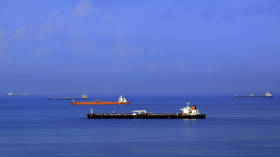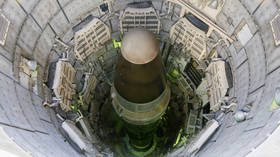Tanker rates soar as Saudi Arabia & UAE get ready to open oil taps

Saudi Arabia and the United Arab Emirates have unveiled plans to ramp up both crude supplies and production capacity as soon as the oil deal with Russia expires. The move has sank oil prices and sent freight rates higher.
After Russia did not agree to new production cuts with the Organization of the Petroleum Exporting Countries (OPEC), the oil cartel’s leader Saudi Arabia set the course for flooding the already oversupplied oil market. On Wednesday, state-owned oil giant Saudi Aramco revealed that it would boost production capacity for the first time in more than a decade to 13 million barrels per day (bpd) on the request of the country's energy ministry. Earlier Riyadh vowed to increase crude supply to 12.3 million bpd starting from April.
Also on rt.com Reasons behind market panic investigated: Has Saudi Arabia learned from its past oil gambling mistakes?Another OPEC member, the UAE, joined its Gulf ally, with its national oil company Abu Dhabi National Oil Co (ADNOC) preparing to pump more oil. The oil producer said on Wednesday it could supply over four million bpd to global markets and accelerate plans to boost its capacity to five million bpd, which was previously slated for 2030.
However, massive production and export hikes did not stop the UAE from saying that it wants to “support a balanced and less volatile market.” To achieve that, the world’s key oil producers should reach a new agreement, Abu Dhabi said, adding that it was disappointed with the talks failure last week.
Raising supplies by the two Gulf states is seen as another attempt to bring Russia back to the negotiating table. While Moscow did not rule out any further talks and will join the meeting of the OPEC + technical committee next week, it wants to ramp up its own output by up to 500,000 bpd.
Also on rt.com The winners & losers of the Saudi-Russia oil price warThe intensifying oil conflict has sent tanker rates soaring. More than 40 very large crude carriers (VLCCs) of the kingdom’s shipping company Bahri are apparently not enough to deliver all the promised crude, forcing the firm to book additional ships. Other companies were also hunting for available tankers, with 24 other bookings out of the Middle East and another five other VLCCs were ordered on the West Africa-East Asia routes, according to S&P Global Platts. According to the agency data, VLCC rates along the Persian Gulf-US Gulf route jumped nearly twofold to 70 Worldscale points and to 115 points on the Persian Gulf-China route on Wednesday.
Oil prices fell nearly three percent following Saudi and the UAE’s announcements on Wednesday. As of 14:17 GMT, WTI was trading at $33.33 per barrel, while Brent slid to $36.26 per barrel.
For more stories on economy & finance visit RT's business section













